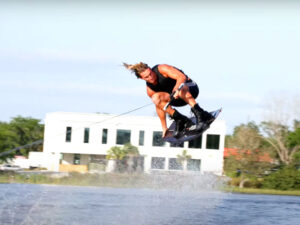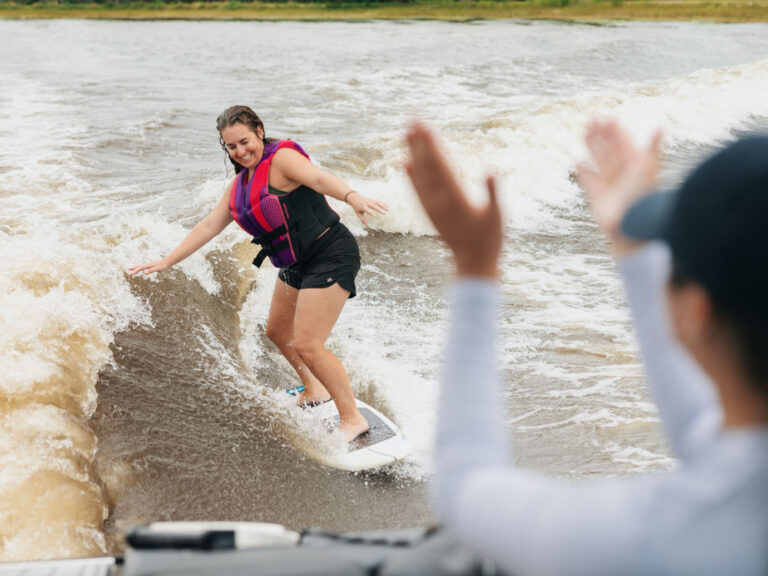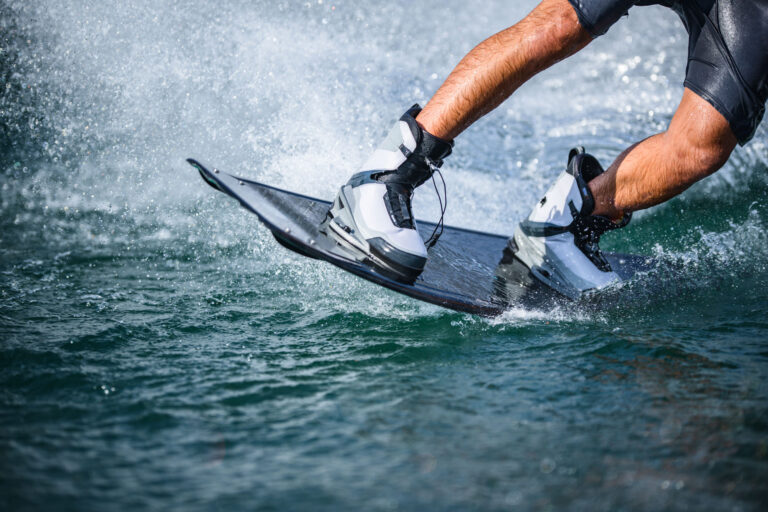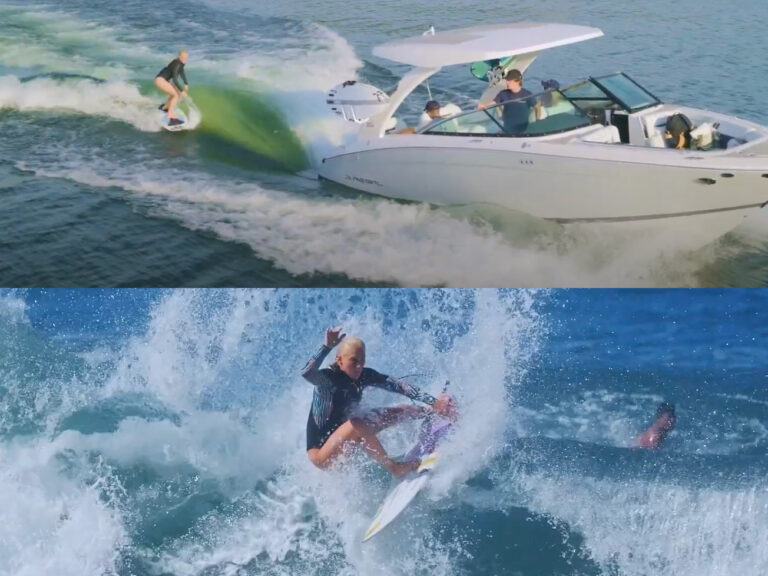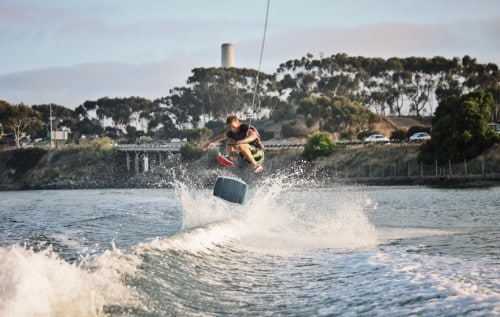
When I started seeing a handful of riders land moves re-entry, it immediately became one of my favorite varieties of wakeskating. Re-entry means riding up the face of the wake, popping an ollie or another move off the lip and then landing back in the transition of the same wake you started from, like you would if you were riding a wave or a quarter-pipe. It’s just one of the many ways to embrace the influence of other board sports – like skate, surf and snow – and make our sport more fun. You can do re-entry moves either frontside or backside, but I recommend starting frontside because it’s easier and more comfortable for most people. Here’s how to approach a re-entry ollie, one of the best re-entry starter tricks. — Nick Taylor
1. Start in the flats and let yourself drift back into the wake. Watch how the wake forms and determine what kind of shape it has. A big, steep wake will be easier to boost off from but harder to land. A smaller, mellow wake with a weak lip will take more effort to pop but will be easier to come back down into.
2. From the trough at the bottom of the wake, keep your shoulders loose and use a subtle edge to ride from the bottom to the top of the wake. Put your skate all the way up to the lip and then come back down. Your board doesn’t come off the water yet – this is called pumping. Carving up and down the wake will get you familiar with the line you’ll draw on re-entry moves.
3. Once you’re comfortable with pumping, it’s time to try the ollie. Come up the wake and pop the ollie motion off the top of the lip, bringing your body up with the board like you would for a normal ollie. Remember to keep your weight on your tail, knees bent, handle close and shoulders loose. Bring the nose of your skate a little higher than normal before you level it out with your front foot, and keep your shoulders just inside the wake to pull you back in. Start small, and then work your way up as you get more comfortable.
Taking tricks from the flats to re-entry teaches you about the mechanics of board control. It will help you take apart your tricks, figure out what makes them flow and use the motions and concepts you learned from re-entry ollies to build an arsenal of stylish re-entry moves.
Photo: Nick Meistrell

